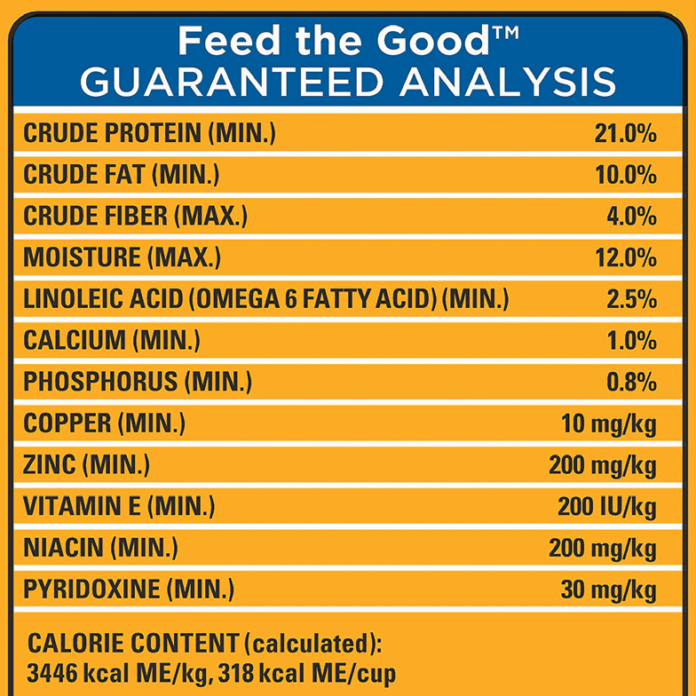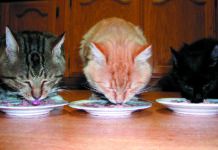Look at the package of almost any food intended for people, and you will find a Nutrition Facts label. It tells you at a glance how much of the food equals a serving and how many calories are contained in that serving, along with fat, sodium, fiber, and other nutrients. It not only makes it relatively easy to tell if the food fits easily into a healthful diet. It also lets you compare two brands or flavors of a specific food pretty easily.
Unfortunately, that’s not the case with cat food. The label might tell you how many calories are contained in a cup, but a cup is rarely the amount of food that is appropriate to meet the calorie needs of an individual cat.
When it comes to nutrients other than calories, the numbers become even harder to interpret. Under a banner called the Guaranteed Analysis, you’ll find some nutrients listed as percentages rather than actual amounts. Other nutrients may be shown as the number of milligrams in a kilogram of the food, which is a measure by weight. That’s also rather useless because you’d have to determine the weight of the serving you’re giving to your pet and then do some math from there to determine the amount of a nutrient in that particular portion.
Making it all more complicated still is that each nutrient in the Guaranteed Analysis is listed as a “Minimum” or “Maximum.” What that means, practically speaking, is that the food may be reported to be a minimum of 25 percent protein by weight, but it could also be higher. You have no way of knowing. Throw in the fact that the moisture (water) minimum is going to differ significantly between canned food and dry kibble, and making comparisons becomes that much harder. If a canned food is mostly water by weight, that doesn’t mean it has less of other nutrients on a calorie basis. It just means those nutrients are more diluted within a set volume because there are fewer calories in the can than if it were full of dry food.
Consider that canned food averages around 75 percent moisture by weight, and sometimes as high as 85 percent. The moisture can make the amounts of any other listed nutrients look deceptively low. For example, a canned diet that is 10 percent fat minimum can seem low in fat. However, on a calorie basis, it could be more than 60 percent of calories from fat, which would be considered a high-fat diet!
Why are the numbers so difficult to decipher? It’s because they were never devised to help people choose pet food in the first place.
The origin of the Guaranteed Analysis
The Guaranteed Analysis on pet food labels comes directly from the template for labels on food fed to livestock — animals that eventually become food for people, like cattle and chickens. For instance, if you have a dairy cow that will be used to produce milk, you want to make sure you’re feeding a high-protein diet. In that context, the food labels are edifying — but not for people with pets that are never going to become food.
According to board-certified veterinary nutritionist Cailin Heinze, VMD, “There has been discussion at AAFCO [the Association of American Feed Control Officials] for several years now about doing a label that’s more like the Nutrition Facts label for people, which provides more useful information. But any changes are likely still multiple years in the future. It took something like 10 years to get calorie information mandated on pet food labels, and then it took several years for manufacturers to phase it in on their labeling!
“For now,” she says, “the Guaranteed Analysis as it stands is one of the least useful parts of a cat food label. To my mind, it serves only a regulatory purpose and has no real value to the pet owner. I can’t think of a time I have ever made a decision on a food based on the Guaranteed Analysis, either for my clients’ dogs or my own.”
Given the gap between the numbers in a Guaranteed Analysis and the information consumers can actually glean from those numbers, we hope AAFCO will take into consideration going to a label that provides more useful nutrient information to pet owners.




